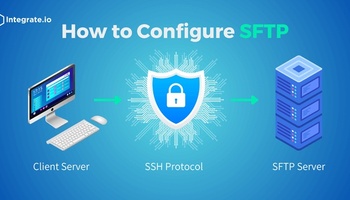Business intelligence (BI) tools have been a shot in the arm of the enterprise. Teams can create their own visualizations and enjoy self-service analytics, without needing IT to compile reports or wrangle big data.
But, of course, there’s a catch. BI tools expose data to a wider range of people, which means there are new issues of BI security (BISEC) and privacy to think about, especially in the age of GDPR. Here’s what you need to know.
Why Is BISEC So Important?
Many people tend to think of InfoSec as a singular concept. If your organization has sensitive information, then you need to secure it.
But security and privacy risks can vary according to the context. There are certain threats when a customer is accessing their account, and there are completely different threats when you’re storing data in a data warehouse.
You also face unique challenges when exposing data to users through a BI platform. The CIA triad looks like this in a business intelligence context:
- Confidentiality: People running BI and analytics reports generally don’t need access to any personally identifiable information (PII).
- Integrity: BI data should provide a detailed picture of current operations. Excluding data, even partially, may affect integrity.
- Availability: BI users should have access to data when they need it, which is often in something close to real-time. They may need to collate information from multiple data sources.
BISEC is therefore about giving BI analysts a productive user experience, without granting them access to PII or other sensitive information.
What Are the Risks of BI?
When organizations don’t have a BISEC policy, they may run into problems. These issues can include:
- Data breaches: Unauthorized users may be able to view PII and other sensitive data via the BI system. This platform also provides another attack vector for cybercriminals.
- Poor-quality analytics: If access controls are too tight, analysts might not get a full picture. This results in poor-quality insights, which can lead to misjudged business decisions.
- Lack of scalability: A reactive approach to BI security might work in the short term, but it makes it harder to grow. A strong BISEC policy will help protect data while your business grows.
Even if you’re not currently reliant on business intelligence tools, it’s good to start preparing now. It’s much easier to apply a policy before you get started, instead of when your business intelligence team is up and running.
How to Implement a BISEC Policy
If you think about how you form an InfoSec policy, you see that you follow certain steps:
- List data assets and map processes.
- Assess all risks.
- Implement system changes to mitigate risk.
- Train and support users.
- Monitoring and auditing.
This kind of security model is an ongoing process, as you’re always trying to find a balance between safety and functionality.
The same is true with BISEC. Your BISEC policy will always have to respond to emerging threats and changing user needs. Here are the steps you’ll need to follow.
1. Make an Inventory of Sensitive Data Sources
First, you’ll need to know where datasets containing PII currently reside within your network. This includes all file directories, SQL databases, metadata, and even Microsoft Excel files with PII. You’ll also need to map out the processes and API calls that move and transform data within your stack. How does your BI platform find the data it requires?
2. Establish a Secure Data Pipeline
Data pipelines are the most secure, reliable way to get data from A to B. A low-code pipeline like Integrate.io is easy to set up and works with most data sources. Simply authenticate the integration to each data source, set up a schema mapping with the drag-and-drop interface, and it's ready to go. Configuring your network around a data pipeline gives you greater visibility into the data transfer process.
3. Collate Data in a Trusted Location
The best way to make data available for BI is to collate it in one repository, such as a data warehouse like Microsoft Azure. This speeds up business intelligence processes, as analysts can see all available data at once. It also gives you greater control over data storage and access. Your pipeline is at the center of your new architecture, with production systems and your data warehouse at the endpoints.
4. Obfuscate PII
If possible, you should aim to hide any PII on a database level. With an ETL (extract, transform, and load) data pipeline, you can transform data before it lands in the data warehouse. That allows you to scramble, encrypt, or entirely delete any sensitive information. With no-code transformations, it's easy to build a secure data model.
5. Use a Security-First BI Platform
There are dozens of BI platforms on the market, each with its own appealing range of features. But don’t get distracted by the bells and whistles — focus on security features. Look for a BI system that makes it easy to configure security settings. Some platforms offer very impressive features, like Microsoft's Power BI, which includes RLS (row-level security). Try to avoid any platforms that create local copies of sensitive data.
6. Maintain Role-Based Access Controls
Internal threats are just as bad as external risks, if not worse. You can minimize this danger by implementing flexible access control for your users. Each role within the organization only needs to view a certain subset of the information in your data repository. With a good BI platform, you can limit data access on a granular level. You can reinforce these roles with tough security processes for individual users, like two-factor authentication and secure single sign-on.
7. Monitor for Potential Data Breaches
It can take 280 days to identify and repair a breach. You can reduce this time if you perform regular auditing to find if any breaches have occurred. It’s also a good idea to educate your end-users about data security and give them the tools to log any breaches they observe. Breaches can and will happen, so you’ll also need to define a breach response process, which will involve notifying anyone impacted.
8. Respond Immediately to Any Threats
Security threats are always evolving, with new attack vectors coming to light every day. A key part of BISEC is to stay aware of security trends and watch out for anything that might threaten your data integrity. Security is an active process — something that you do every day. Stay alert and stay ahead of cybercriminals.
How Integrate.io Can Power BI Security
Business intelligence is a powerful tool. It's so impressive to watch people create rich visualizations in their BI workspaces that we sometimes forget those visualizations often use real data from real people.
Securing that data takes more than just adding two-factor authentication and SSO. You need a strong, scalable infrastructure that puts data security at the heart of everything.
Want to see how Integrate.io can help? Schedule a call with our team of data integration experts, or sign up to start your 14-day pilot of the Integrate.io platform.










